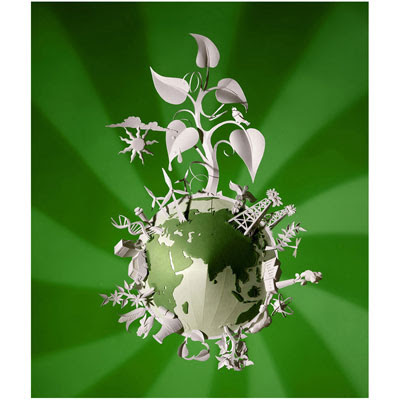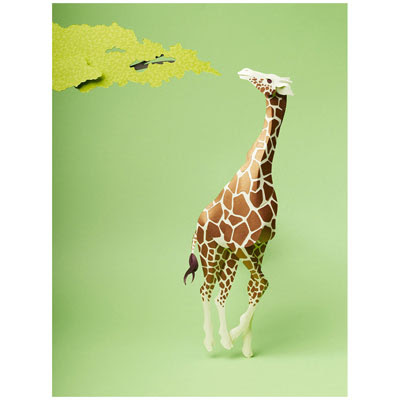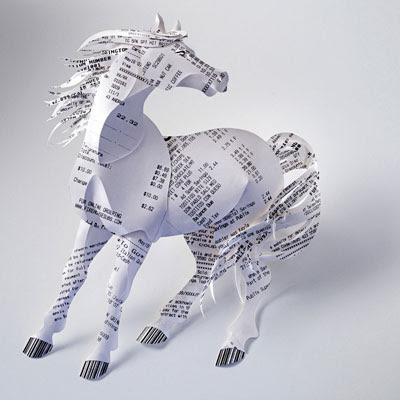


Hi Gemma
I'm happy to answer your questions for you - I'm so glad you like my work. I remember being at this stage in my degree course and I really didn't know what I was going to do next!! I'll try to answer your questions as fully as I can.
> What kind of things are you inspired by? Do you have any particular designers/ artists that you look at?
I'm often inspired by a piece of paper in fact - I spend a lot of time in the paper department of Paperchase on Tottenham Court Road and spend a fortune in there. The real inspiration tho comes from the brief and in talking to my client - it's the difference for me between being a fine artist and an illustrator - I work at my most creative with a few boundaries to push. Even when I'm working on personal projects I work best if I have some kind of brief for myself in mind. Artists and designers that I love and that do inspire me are Cassandre, Erte, Andrew Goldsworthy, Pugin and Norman Rockwell.
> From looking at your work, your clearly very talented at what you do, especially with paper, how did you develop your skills for them to become this advanced? Have you attended paper craft classes of book binding?
I was one of those kids who always made everything on Blue Peter and transforming cardboard boxes into doll's houses. I did my degree and postgraduate at Glasgow School of Art in both Graphic design and illustration and they were very good at getting visiting lecturers from London (the centre of the british design industry then) to come and do workshops. One of those was in paper sculpture and I just felt right at home with it as a medium. Although I'd gone to Glasgow to specialise in Illustration, by the time I left in 1987 I'd changed over to specialise in Graphic design. I had a wonderful month's work experience with Milton Glaser in New York during my PostGrad and then landed my dream job with The Small Back Room in London. As a design consultancy their house style was quite illustrative, with all the designers being very conceptual and creative individuals. We were encouraged to learn new skills (including bookbinding) as well as continue to keep up existing skills through workshops such as life drawing.
It was an extremely motivating and inspirational place to work, so when I left there I freelanced in several different design consultancies rather than be employed by one and worked part-time as a lecturer whilst starting to to myself established as an illustrator in paper sculpture. Gradually I moved away from design and teaching and into full-time illustration.
> When you begin designing your image, do you sketch out the composition first or do you jump straight in to creating the layered paper elements?
I always have to draw everything out first and I'm working out the logistics of how the mechanics of the image will work at that stage. It also means I have a line drawing for the client to approve and that they can use as a position guide for text whilst the actual piece is being constructed.
> How do you get the layers to suspend on top of each other on their own?
It depends on the individual image. Many of them are built in false perspective and I have to plan overlaps of the elements so that I can put in supports between the differnt layers and elements. Sometime the photographer has to suspend pieces with fishing line which get retouched out later.
> Do you work with a photographer and professional lighting equipment, when taking photos of your work to get the perfect shot?
sometimes the client wants to use their own photographer, but mostly they're happy to go with my recommended photographer, Jonny Thompson, who I've worked with for years. (www.jonnythompson.co.uk). Although he works directly for the client, all the shots come to me first for comment before the client sees them, so I do have control over how the finished image looks.
There's also a second way I have of working which is more of a digital collage. I make the pieces as individuals, but either scan them or take very simply lit digital shots of them and then comp the image together in Photoshop. The pieces have a different end feel from photography - less atmospheric, I suppose - but it works particularly well for jobs where there is no time or budget for photography, or where it is likely that elements will need to be added/moved/removed etc. and so more flexibilty is needed to alter the artwork.
> Whats your favorite brief that you have been commissioned by and why?
So many! I loved the Kleenex job in particular tho - the designer I worked with was excellent and gave me free rein with every aspect of the image, including the typography (the main thing I miss about being a graphic designer is the playing with type), and I loved the ideas he'd come up with. It's a set of work that has since won loads of awards so no wonder I like it!
> What type of work do you get commissioned for? for example, Is it mainly publishing, advertising or editorial?
It changes - lately more advertising work. When the credit crunch hit I was doing a lot of editorial, making images from money to illustrate articles on finance. I used to do a lot of images for children's publishing. It varies. One of the major advantages of being an illustrator is that there's always something new to work on - one or two little animation jobs have started to creep in so it would be nice to do some more of that.
> And for my last question: Can I display this information onto my blog?
Of course! Also would you put a link to the illustration website
www.illustrationweb.com/
There's also a Facebook page if you want
www.facebook.com/pages/Gail-
Good luck with the final stages of your course - I'd like to hear how you get on if that's OK.
All the best
No comments:
Post a Comment